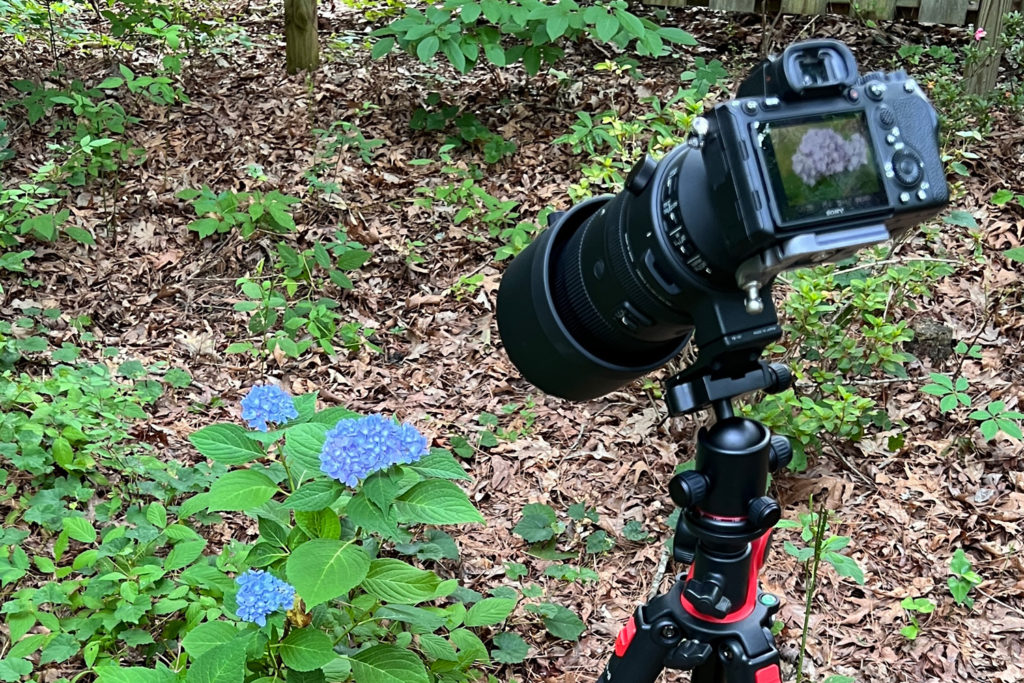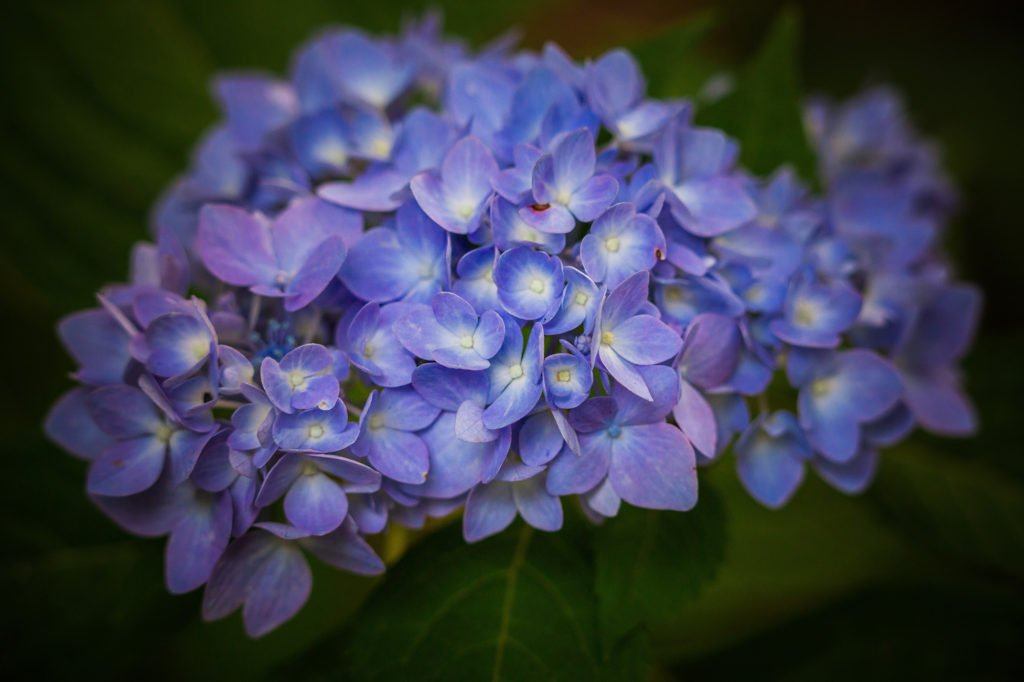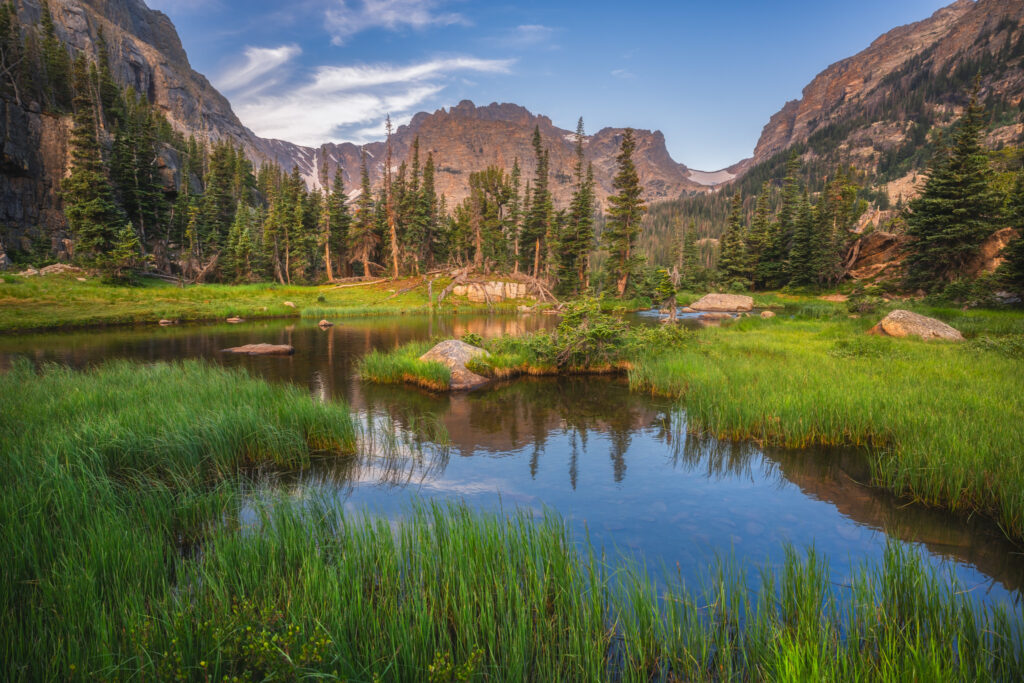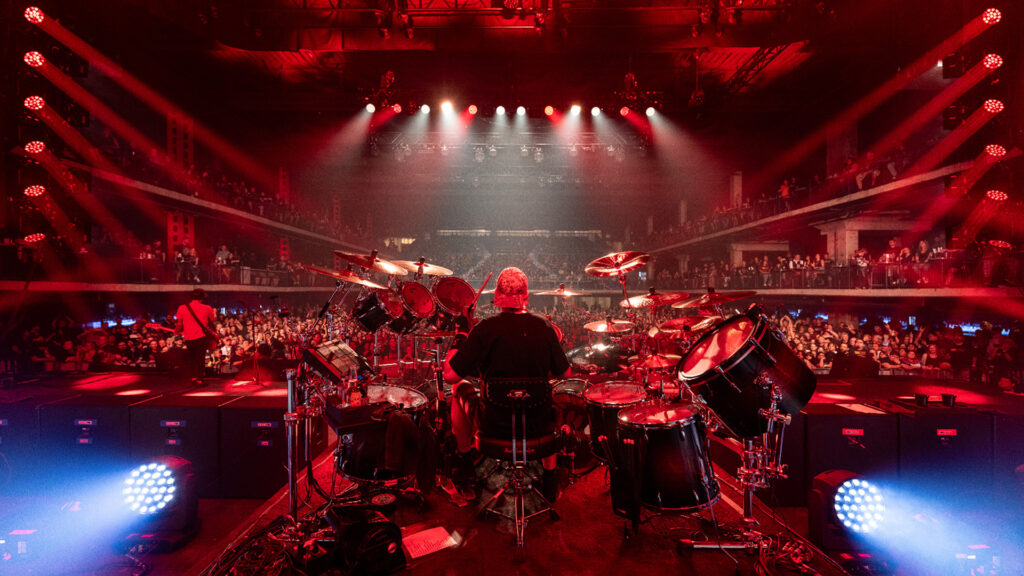It’s not often that a photographer looks at a long telephoto zoom lens normally used for wildlife as a potential macro lens, but that’s exactly what I did with the SIGMA 150-600mm F5-6.3 DG DN OS | Sports. In fact, this lens has amazing close focusing capability that makes it perfect for macro, as well as birding, wildlife, sports, and so much more.
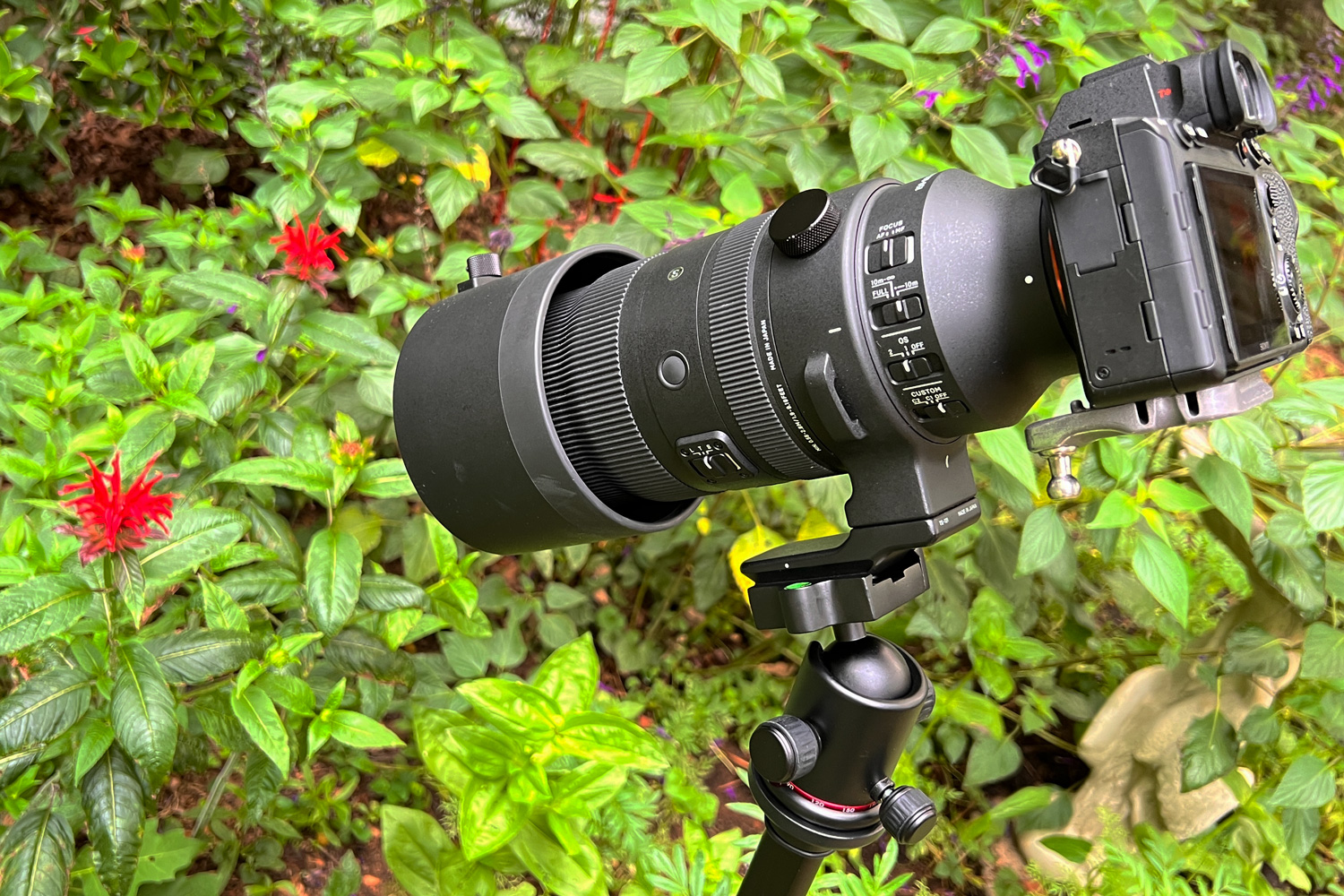
First Impressions
When I got it out of the box, the first thing I noticed is the size. It’s big. Anyone who considers the 150-600mm DG DN OS | Sports is going to know this already, but I am a little-lens shooter and this is probably the biggest lens I’ve ever used. However, it’s not as heavy as I expected it to be. No, it’s not a tiny, I series lens, but I thought it was going to be harder to heft and use than it really is. The weight actually makes it a bit more stable, which is an advantage when you’re shooting macro subjects. Since this one is designed for mirrorless camera bodies, SIGMA re-engineered and squeezed the same range (and improved sharpness) into a lighter lens. At just 4.6 pounds, it’s quite a difference from the 6.3 pounds of the original 150-600mm Sports lens for DSLRs.
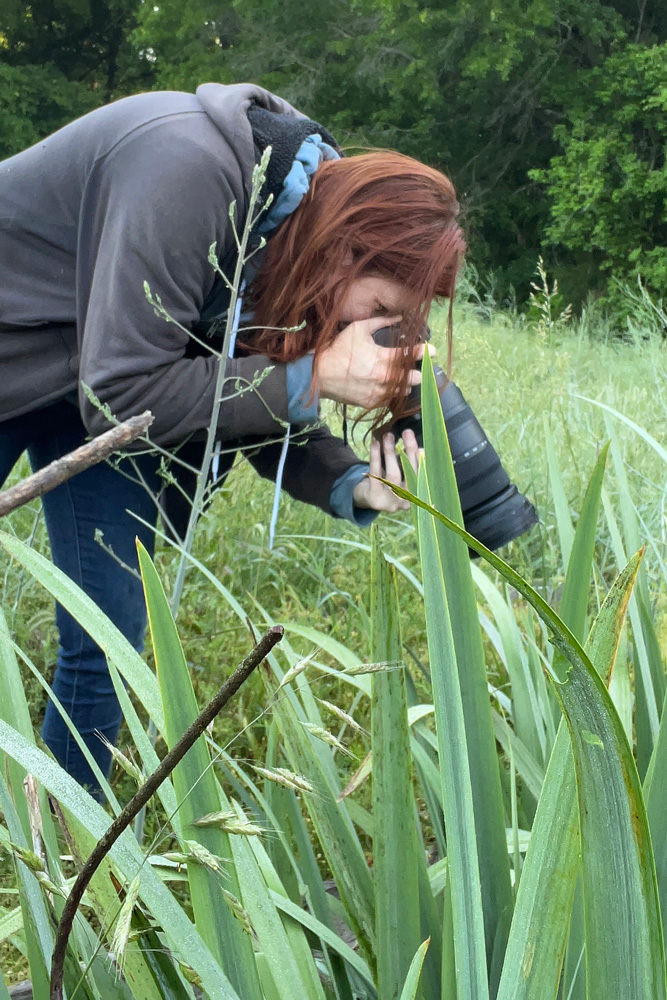
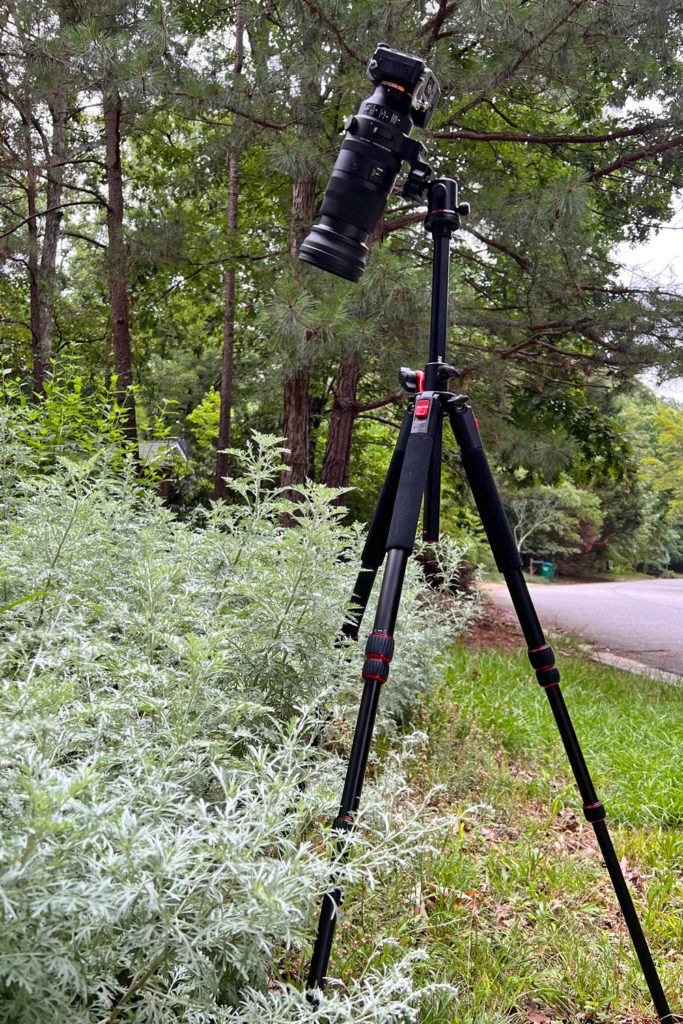
Like any other SIGMA lens, it is sturdy and well-constructed. I am an avid Art lens user, so I’m definitely used to sturdy lenses, but the Sports lenses take it to a whole other level. I tend to beat up my lenses a little bit and I am sure that this lens could survive me! If you’ve read my other reviews for SIGMA, you might remember that I am a little bit of a klutz. I think I’ve dropped every lens that I own (and some loaners that I don’t own) in the grass at some point. When I’m changing lenses at my sessions or out teaching, instead of putting my lens in a bag, I will just place it on the ground and pick it up later. I’m thrilled to report that for the first time ever, I didn’t throw this lens on the ground or sit on it. At one point I was carrying this lens through some very tall grass and it was a wet morning, so both the lens and I were completely soaked. But it didn’t bother the lens since it’s dust and splash resistant.
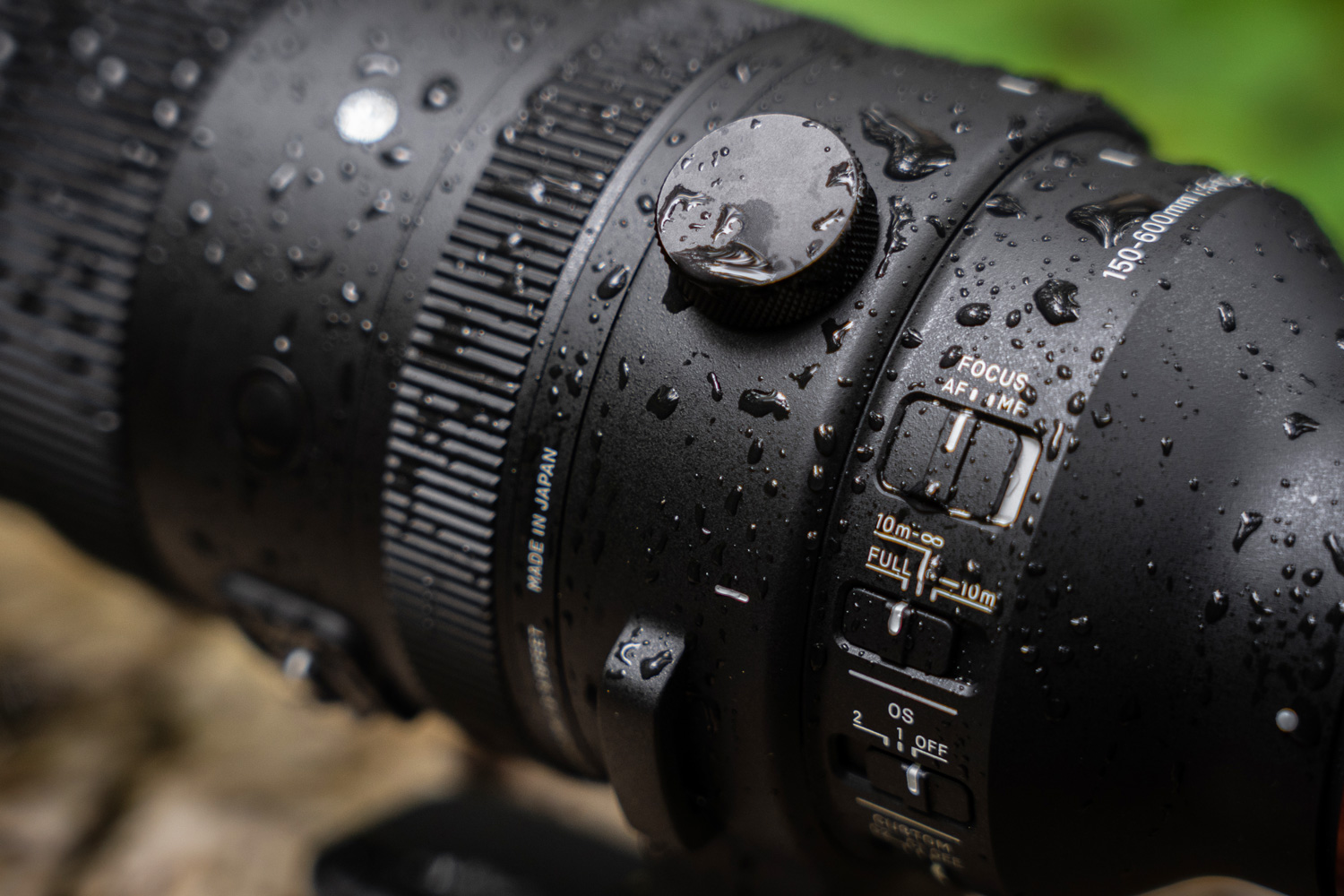
The controls on this lens are familiar except for one. This lens features a new Zoom Torque Switch (Lock, Tight and Smooth). The “Tight” setting keeps the lens from zooming in or out unless you push it yourself. This was ESPECIALLY handy when wearing it on my Spider Holster, as the “T” setting kept it from unwinding to 600mm while hanging vertically from my hip.
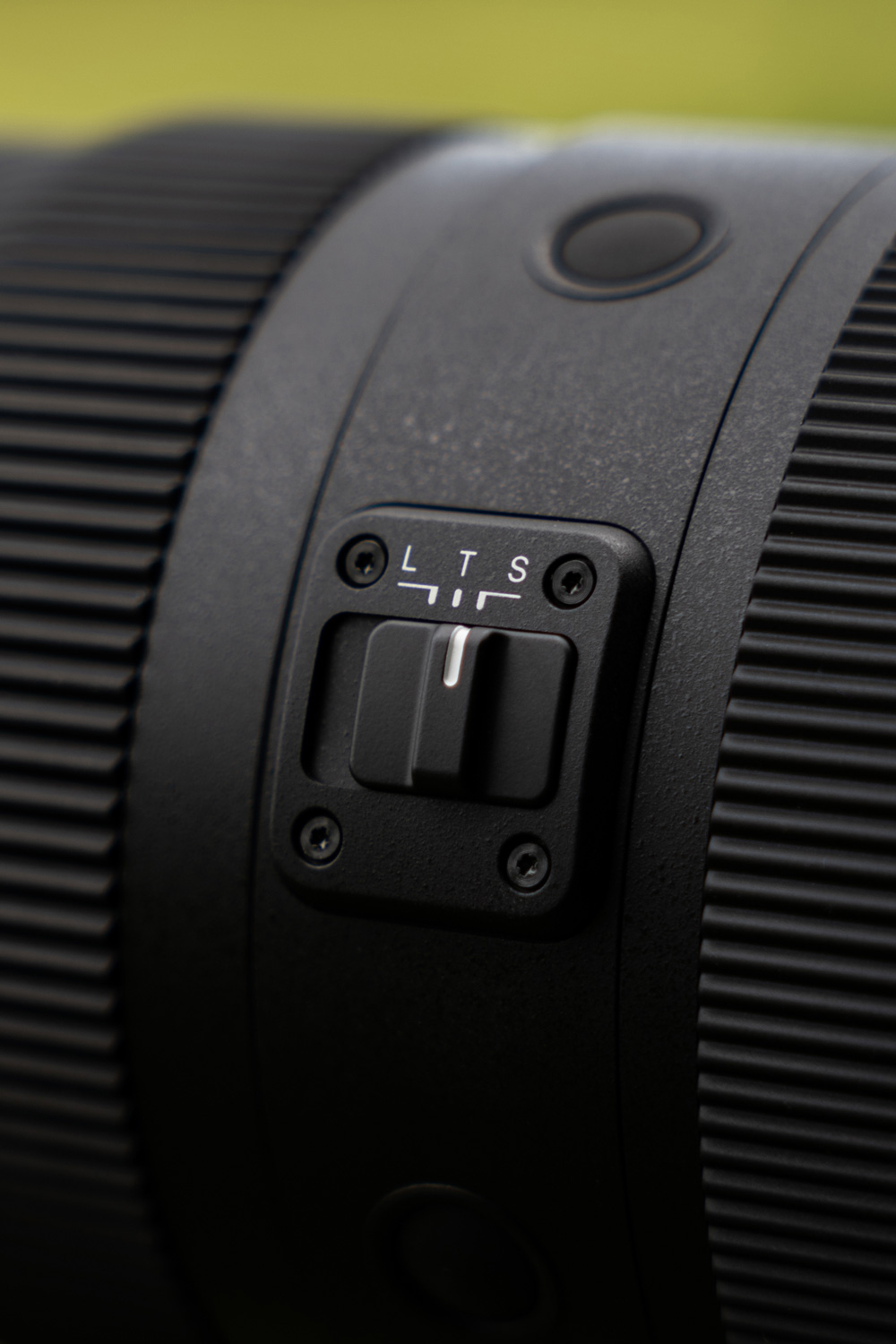
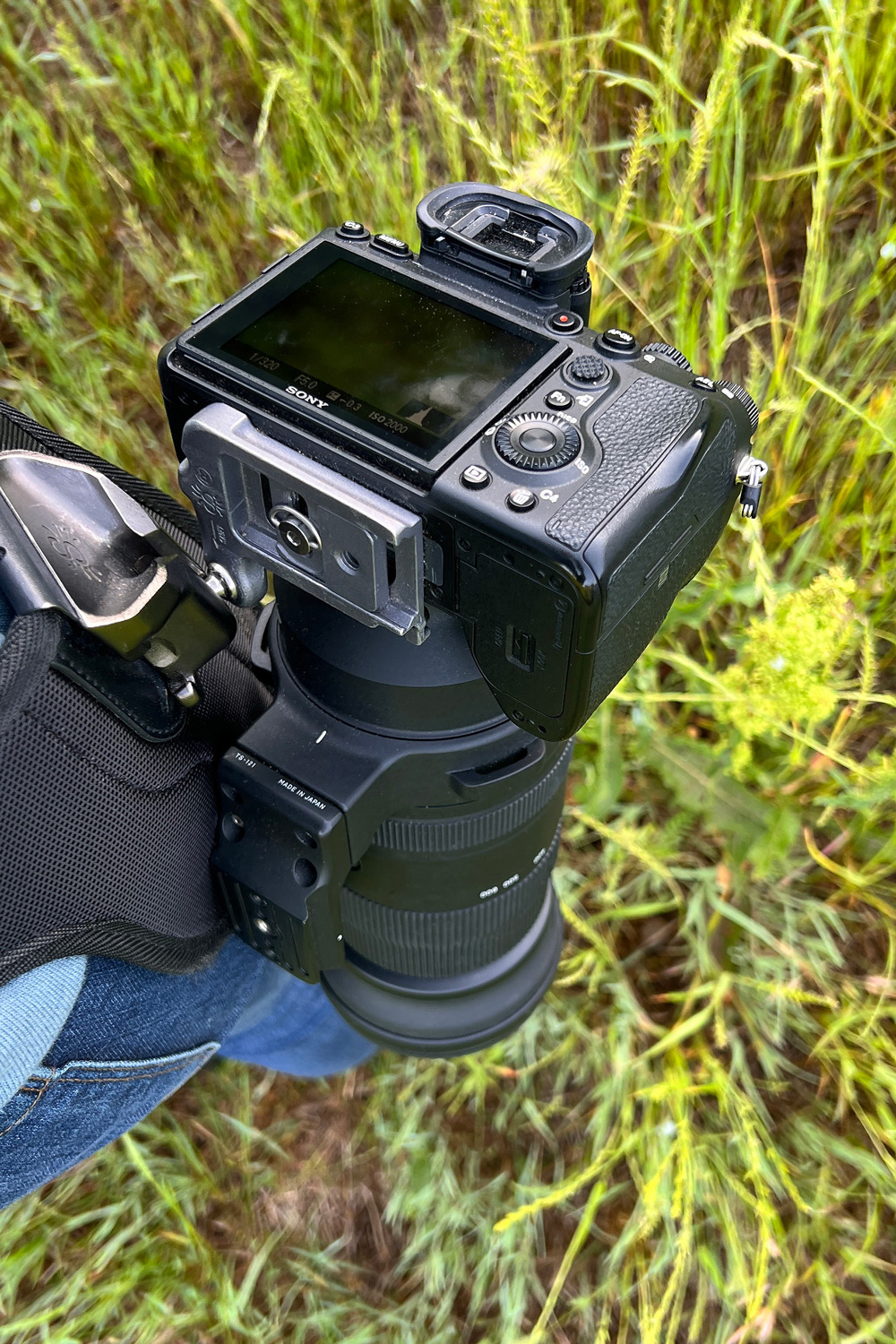
This brings me to the next thing I noticed, which is the focus limiter switch. I think this is completely crucial to macro photography. Being able to tell the lens itself how far it should focus is what makes close-up photography possible. So while this isn’t necessarily a macro lens, it can behave like one in a lot of ways. The switch can limit the lens to work only within 10 meters of the lens, so while that’s still 30 feet away, it helps keep the lens from trying to focus on things far away.
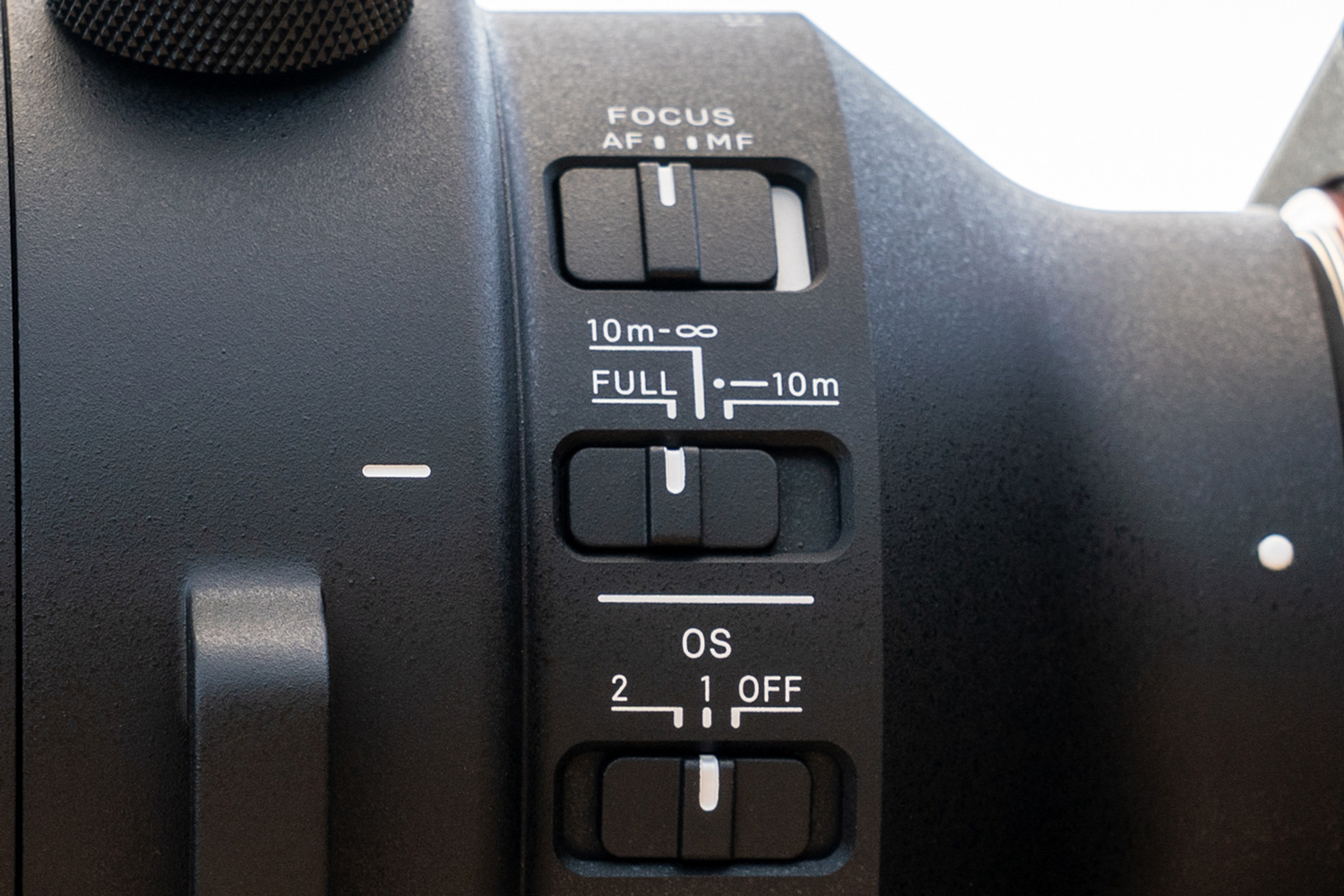
This lens is also fast and smooth when focusing. It’s quick to focus and will catch things like bugs or lizards without taking so long to focus that they’re gone, plus it’s virtually silent so it doesn’t scare them away.
The minimum focusing distance changes with the focal length you’re using, and at 180mm, it’s about 23 inches. Since the lens is a little over 10 inches long, that’s about a foot from the front of the lens. Zooming in to 600mm makes that minimum focal distance a lot further away from you. Since this lens focuses so close, I was excited to try it out for “macro” photos. Now, strictly speaking, a macro lens is one that can reproduce the image on the sensor at 1:1 ratio, or life-size. I normally shoot macro with the 70mm F2.8 DG Macro | Art or 105mm F2.8 DG DN Macro | Art. This isn’t a true macro lens because it doesn’t go 1:1, but it’s pretty close at 1:2.9 at 180mm!
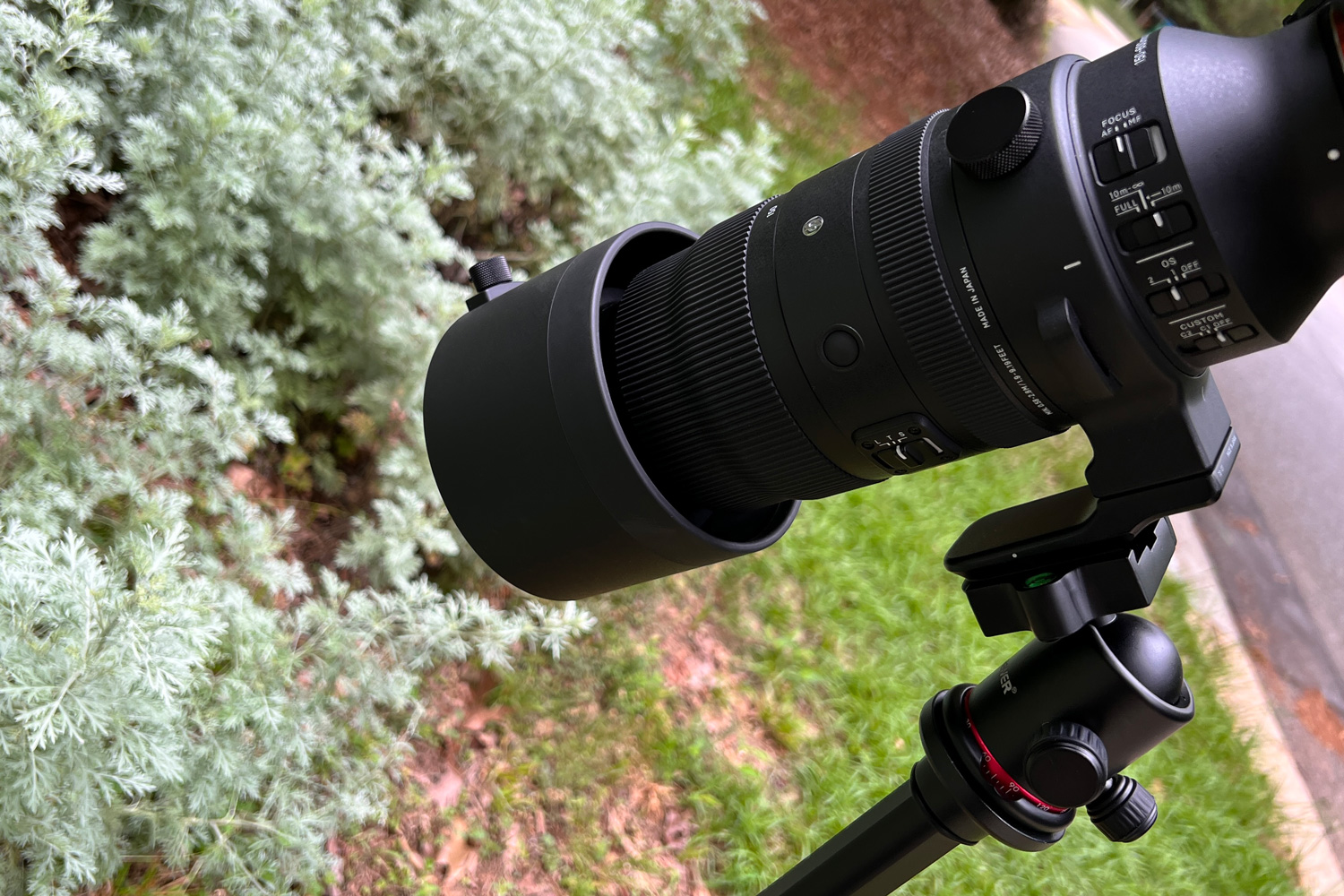
I tend to pixel peep a bit more than I should, especially on my macro images. This lens surprised me with how sharp it is. Not that I wasn’t expecting a sharp lens, but that I compare everything to my macro Art lenses. The 150-600mm is brilliantly sharp as long as your shutter speed (or handholding skills) are sufficient to freeze motion.
The bokeh is also really important to me. The out-of-focus areas in a picture can add to the story and help separate the subject from the background, so how it looks is something I pay attention to. I am picky and I don’t care for “crunchy” bokeh, where I can see edges to things in the background, so I was quite pleased to see that the bokeh for the 150-600mm is nice and smooth.
Let’s put it to the test!
I decided to take the 150-600mm DG DN OS | Sports out for a test drive in my front yard, a friend’s garden, the local botanical gardens, as well as to the farm where my husband works. Lots of fun places to see new things!
One thing I love with my usual macro lenses (the 70mm and the 105mm) is trying to photograph the dew at the end of grass blades. It’s always a challenge because it requires you to be patient and hold very still, so it’s always a great way to begin any nature photo walk. It’s humid in Georgia, and the local gardens have sprinklers running in the mornings as well, so the opportunity isn’t hard to come by. So I set the lens to 150mm, switched on the focus limiter so it would only go for what was close, and did my best. I was actually surprised at how well this lens handled this job. It’s important to remember that it’s not a macro lens, so I had to look at grass blades two feet away from me instead of a few inches, but WOW did 150mm ever deliver! The separation from the background is something I always look for and getting that with my 70mm macro lens is sometimes difficult.
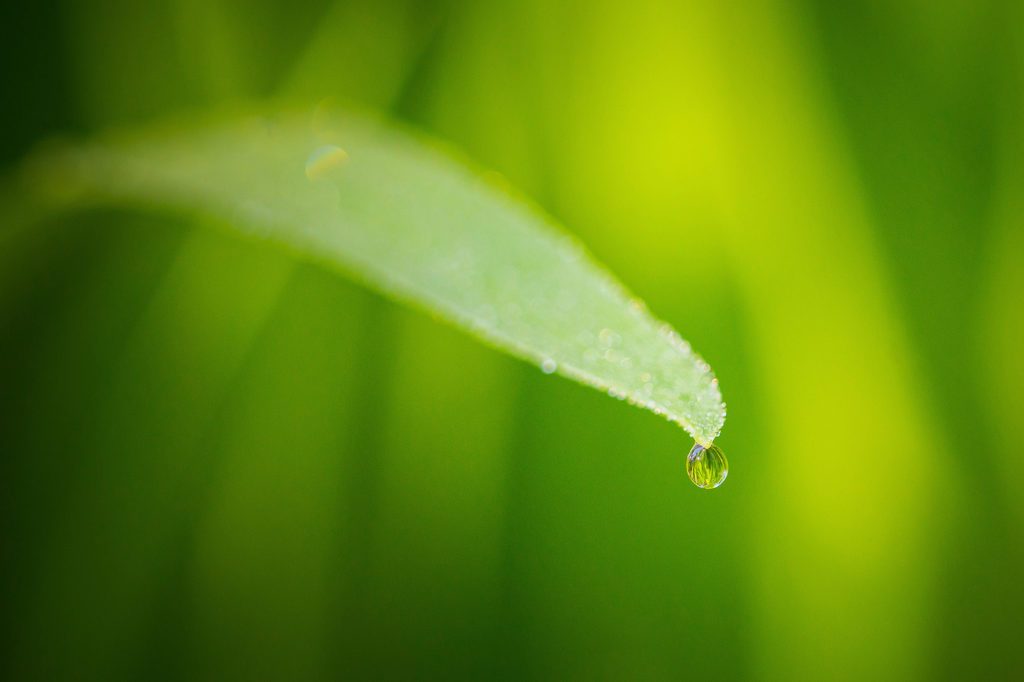
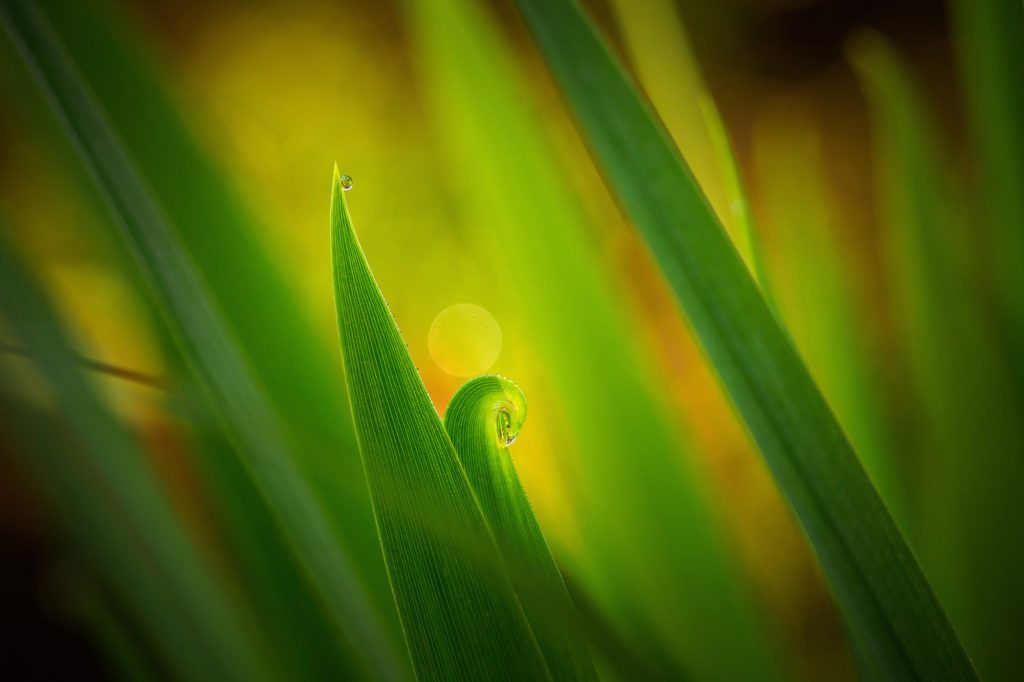
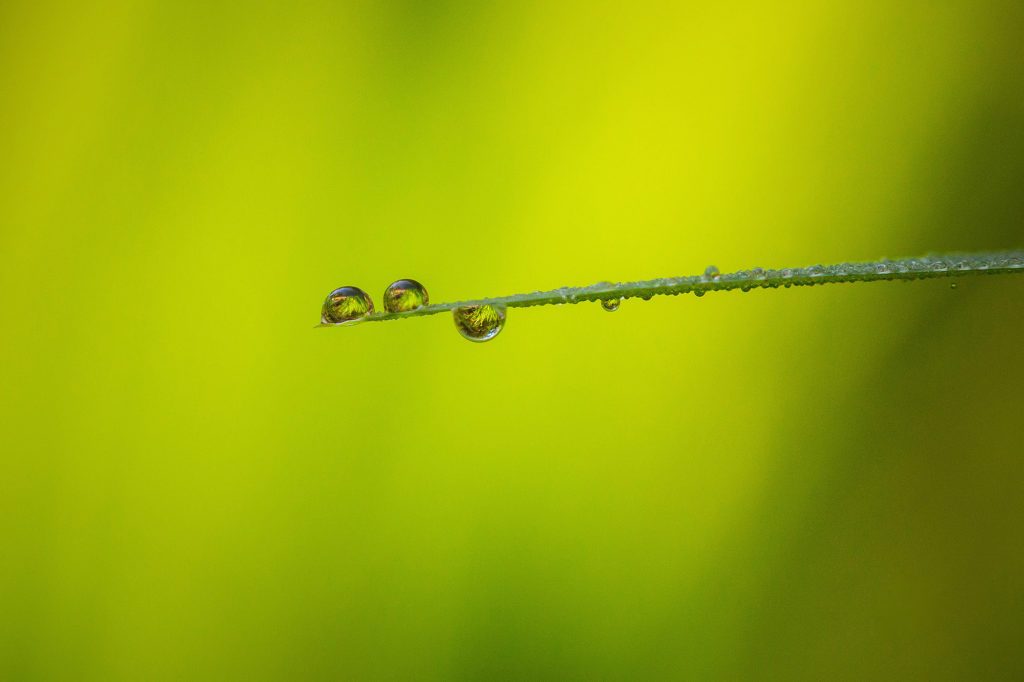
Since it did well on grass blades, I knew the next test to give it was flower “portraits”. This means getting a picture of the whole flower instead of just a bug or a petal or tiny dewdrops. I usually use my 85mm F1.4 DG DN | Art or my 105mm F1.4 DG HSM | Art for pictures where I want a full flower, separated from the background, but the 150-600mm lens did it beautifully!
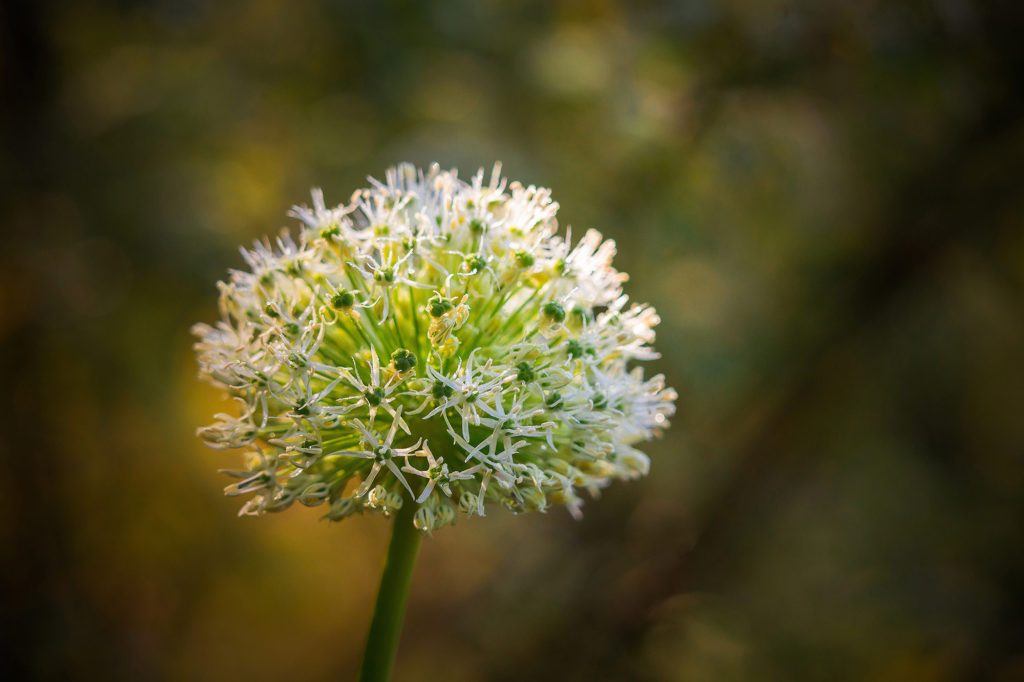
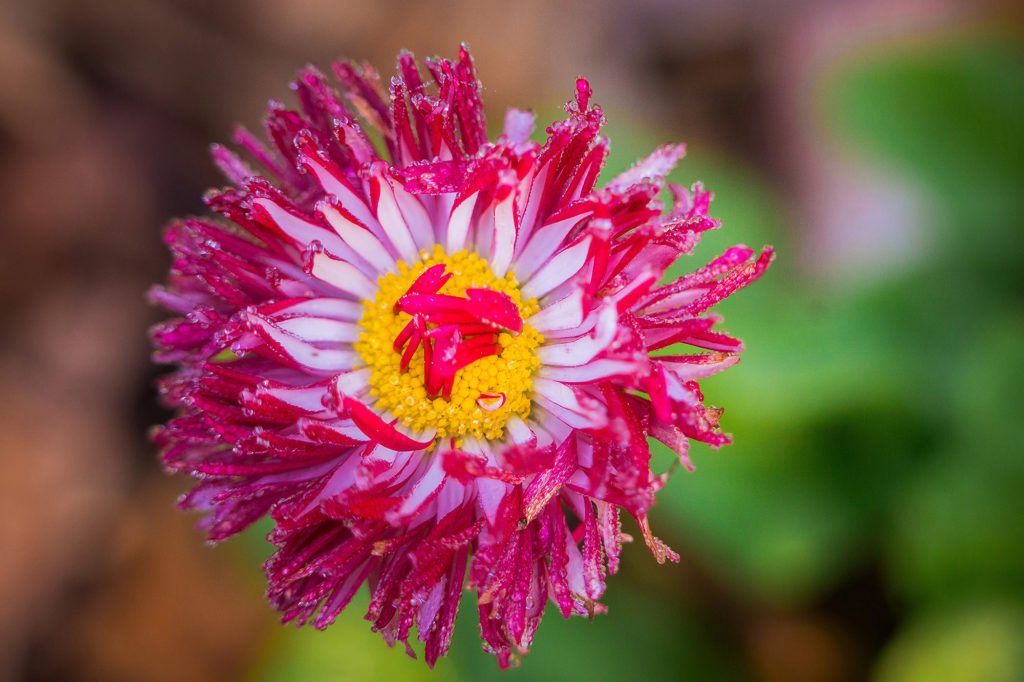
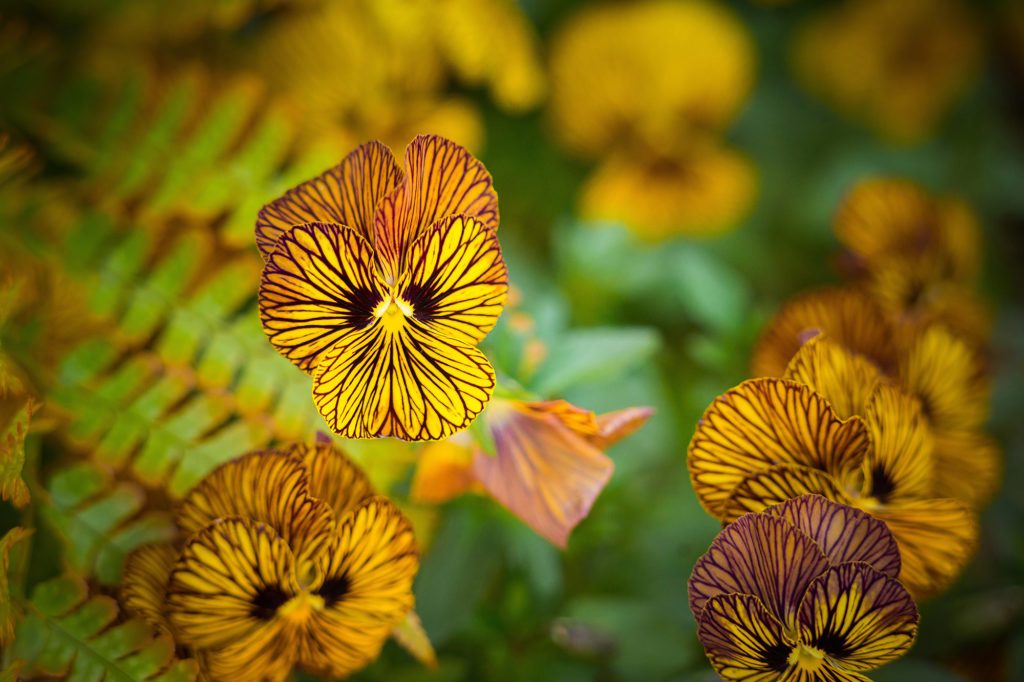
I always find tulips hard to make interesting. They’re so plain, and getting them separated from whatever is going on in the background is pretty crucial to allowing you to appreciate the beauty of the flower itself without incorporating the rest of the scene. But at 600mm, I was able to remove all the distractions of the background and achieve stunning results.
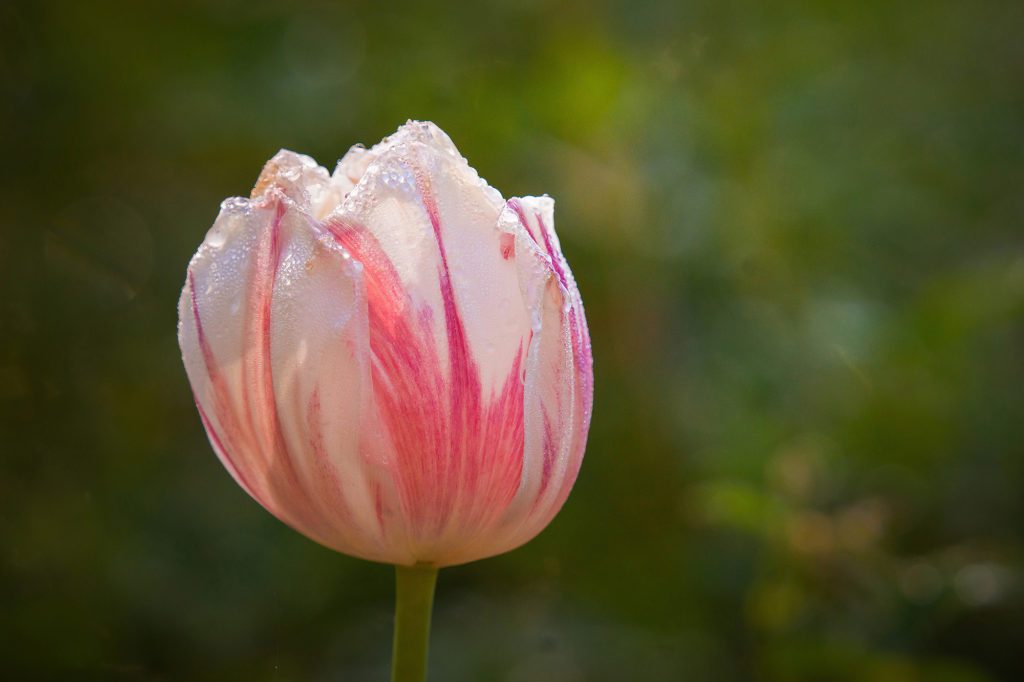
Another thing I’ve had a hard time capturing in the past is a nice shot of rose leaves with dewdrops on them. I can get close and get part of it, but the depth of field required makes it tough to show the magic of an entire set of leaves with water droplet jewels shining in the sun. Another shot nailed with this lens. I like this a lot because it means I can carry just one lens to effectively do two jobs: macro, plus flower portraits.
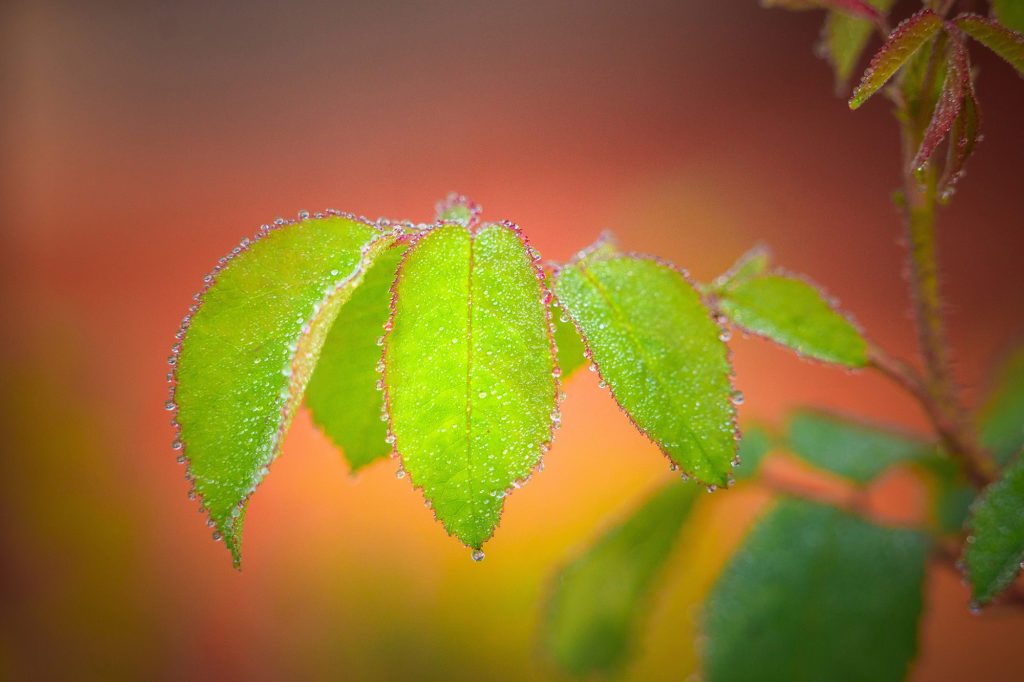
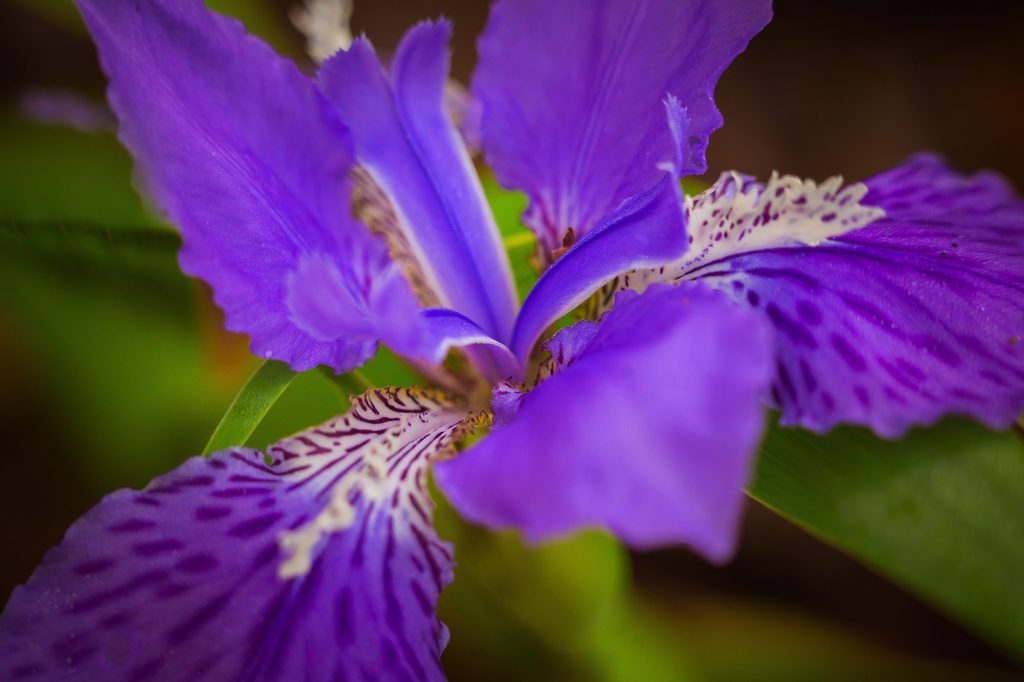
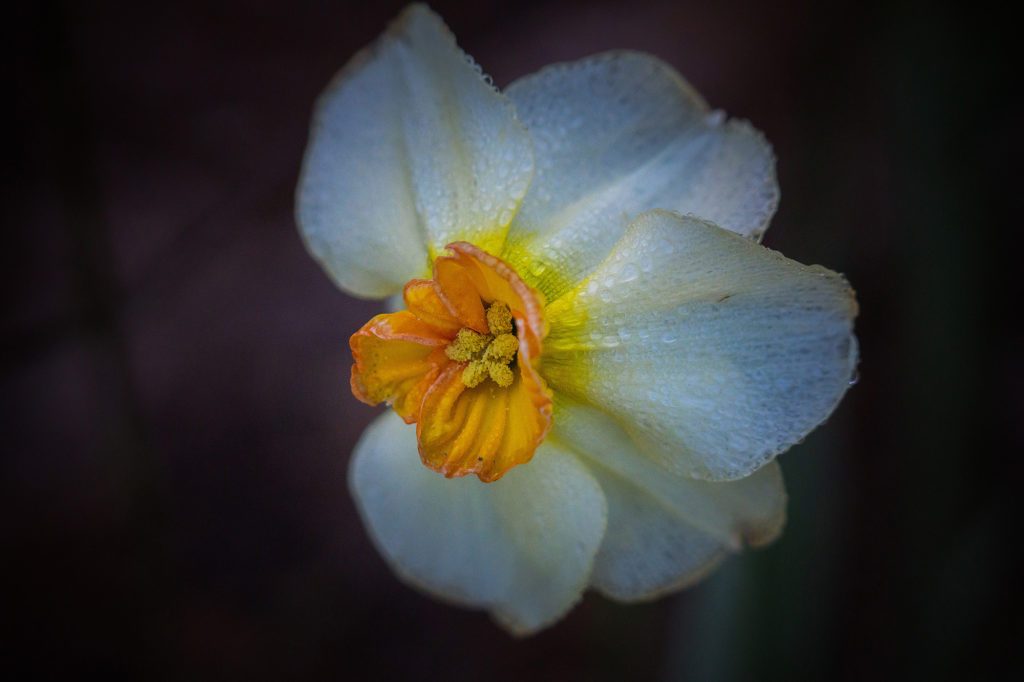
Next, I wanted to test backlighting, so I turned to the trees… dogwood trees in bloom. They were covered in dew as well. I handheld the lens above my head (the good light was even higher than my 6-foot self) and used my flippy screen on the back of my camera to compose. There was no banding or flare, which is pretty impressive! It also turns out that the tripod foot is a nice place to put your hand when taking pictures over your head.
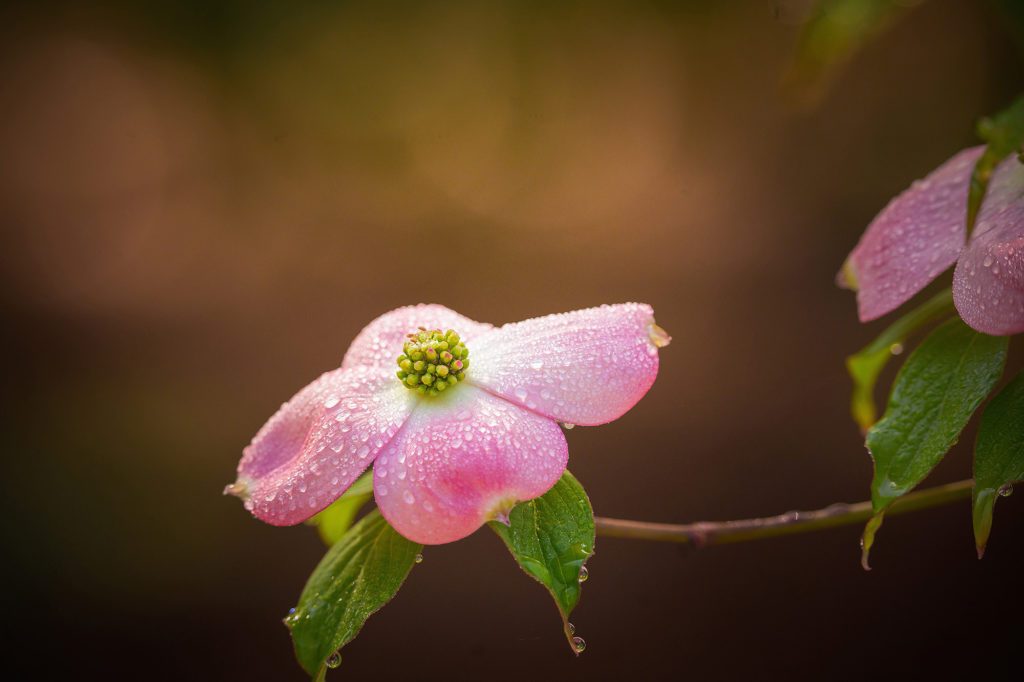
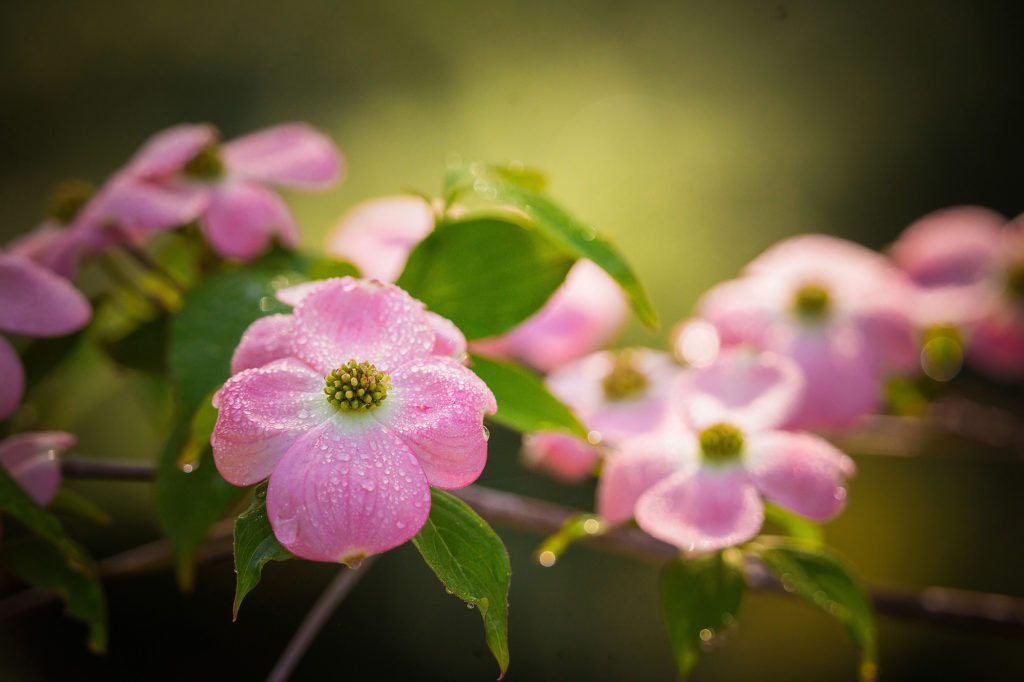
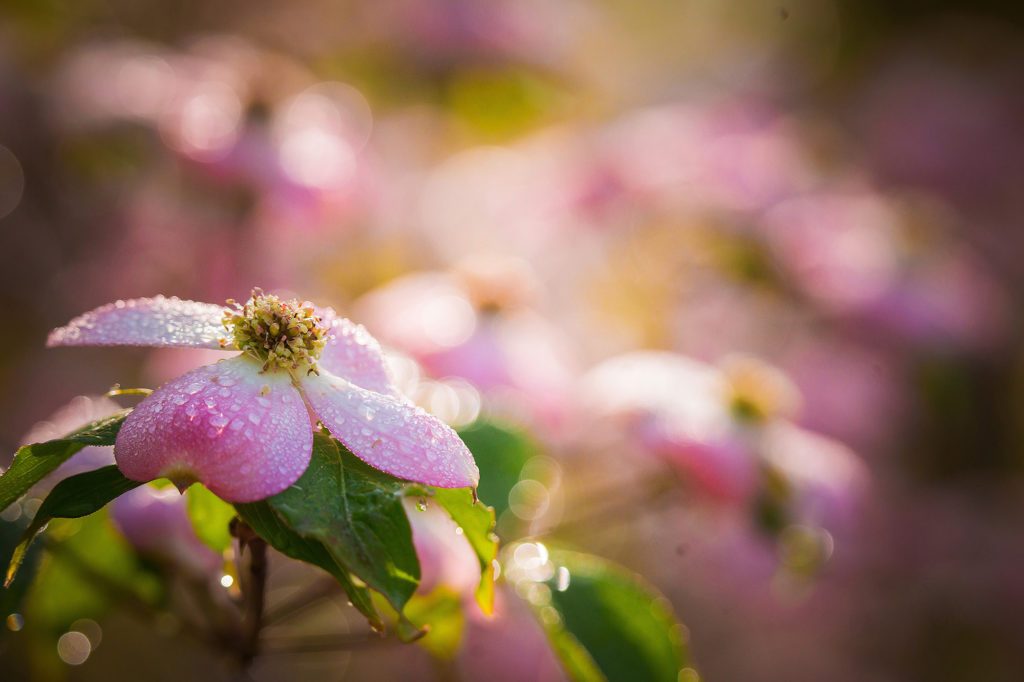
For the morning in my friend’s garden, I enjoyed looking around for pictures I would normally have trouble with using a regular macro lens. I deliberately looked for flowers with a lot of front-to-back depth to them like azaleas and poppies.
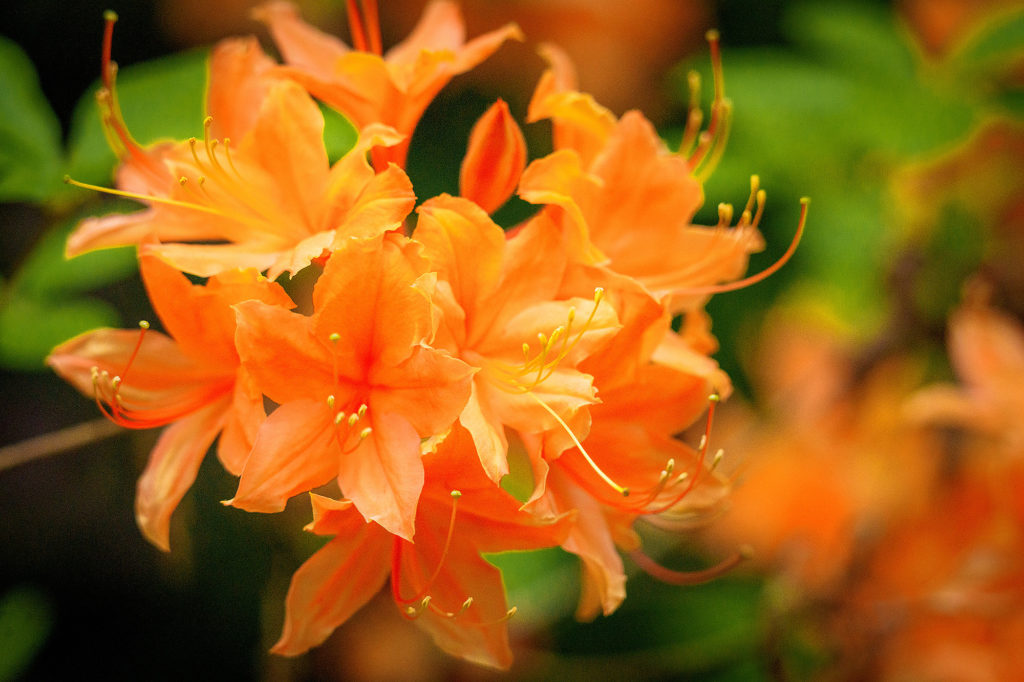
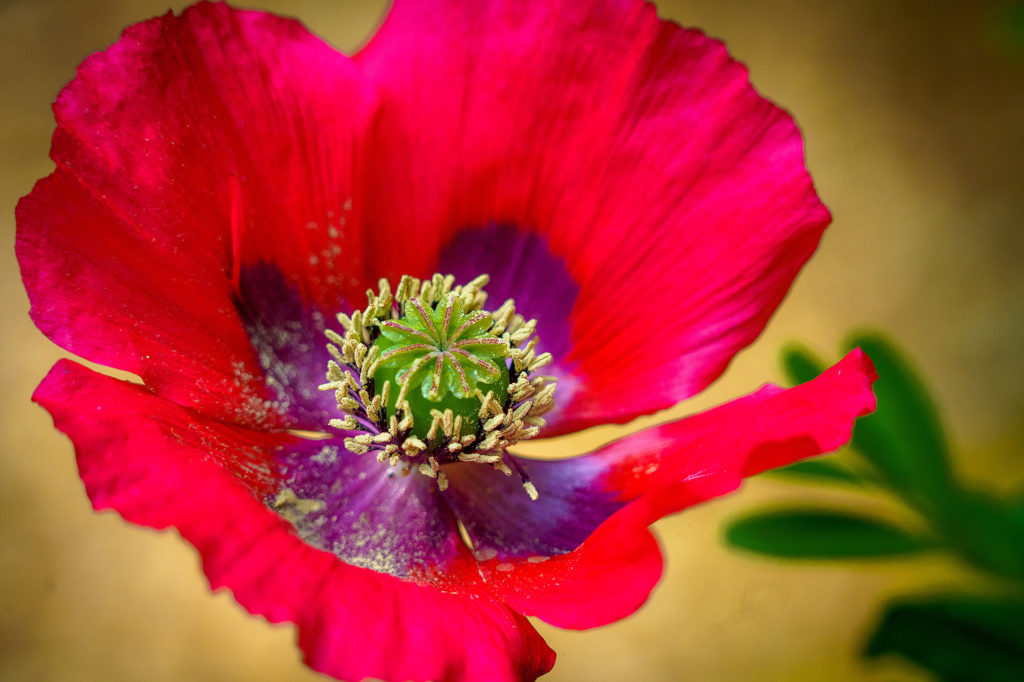
With a typical macro lens, I usually focus on one part of the plant, but the 150-600mm was able to give me more depth of field, so I was able to capture single images that had whole flowers, front to back, in focus! I also spotted an anole lizard in the leaves of a canna lily, and because of the longer focal length, I was able to get a picture from far enough away that I didn’t scare it.
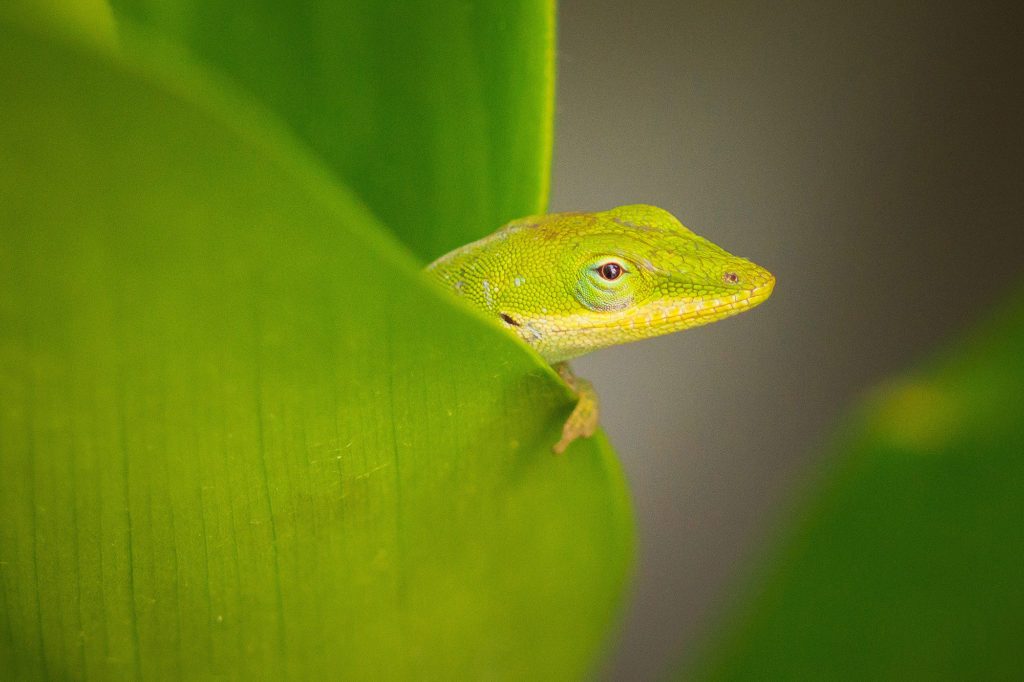
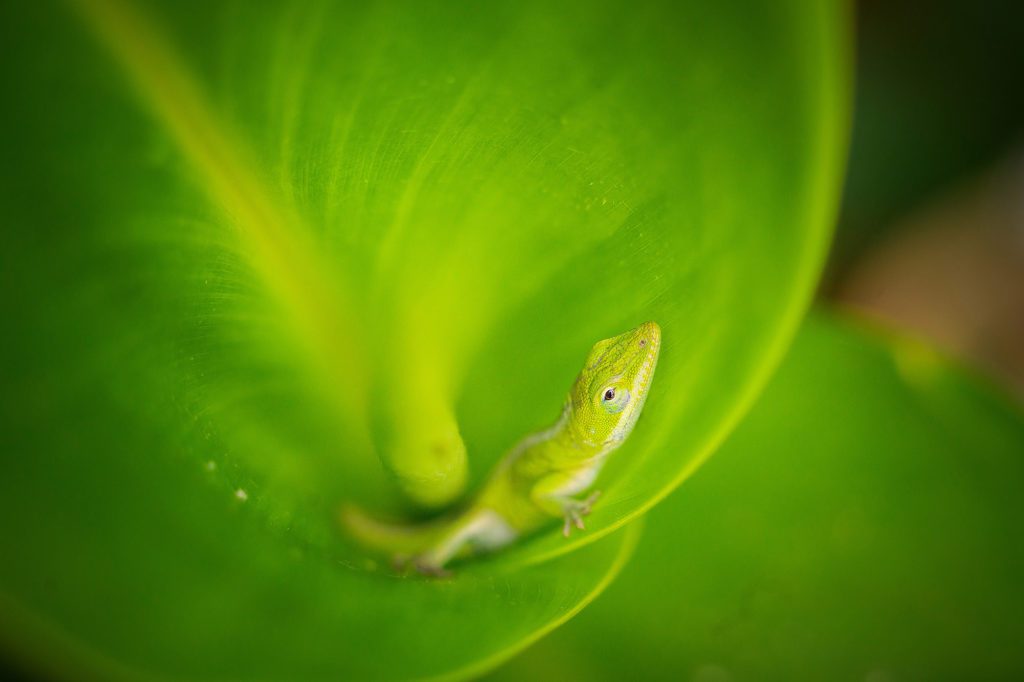
For my morning at the farm, I was looking for subjects I don’t normally find, and I was super excited to find five frogs there. Even one per year is pretty good for me, so to see five was the best day ever! Four of them were green tree frogs like I expected to find, but the last one was actually one I’ve heard but never seen – a spring peeper! I was able to get an overhead photo of this guy by getting the lens right up to the iris leaves where he was sheltered. I wouldn’t have been able to get this shot with a shorter lens because I would have moved the leaves and scared him away. I did try to pick him up to put him somewhere better for photos, but he jumped away before I could get to him. Though I was excited for that find, I think my favorite frog photo (say that five times fast) of the day was one of a very well-fed green tree frog hanging on some leaves close to a yellow iris flower.
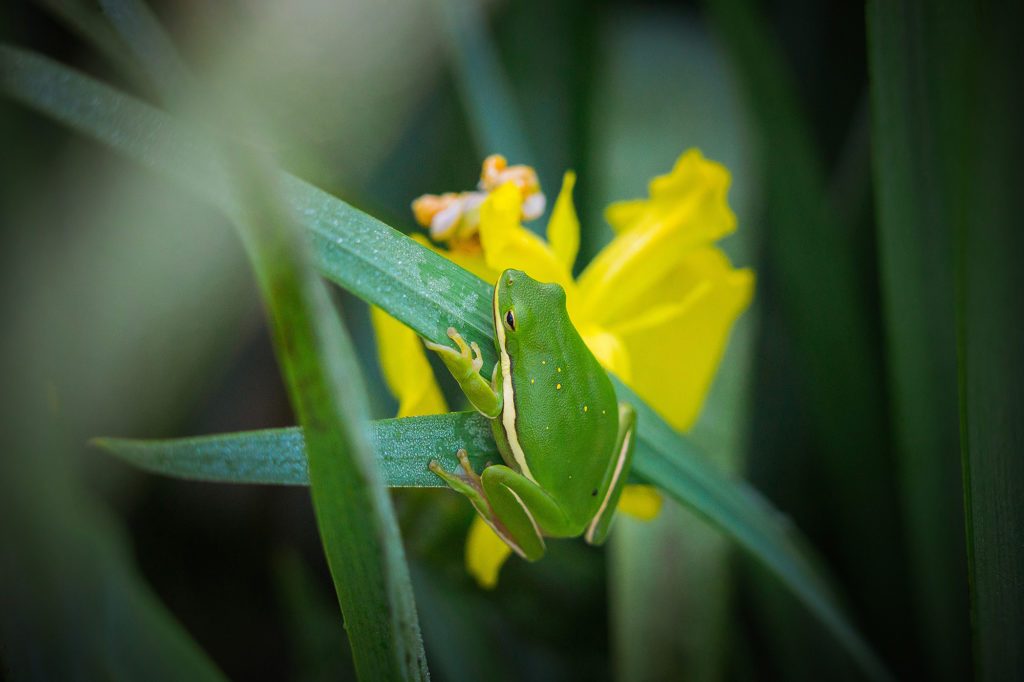
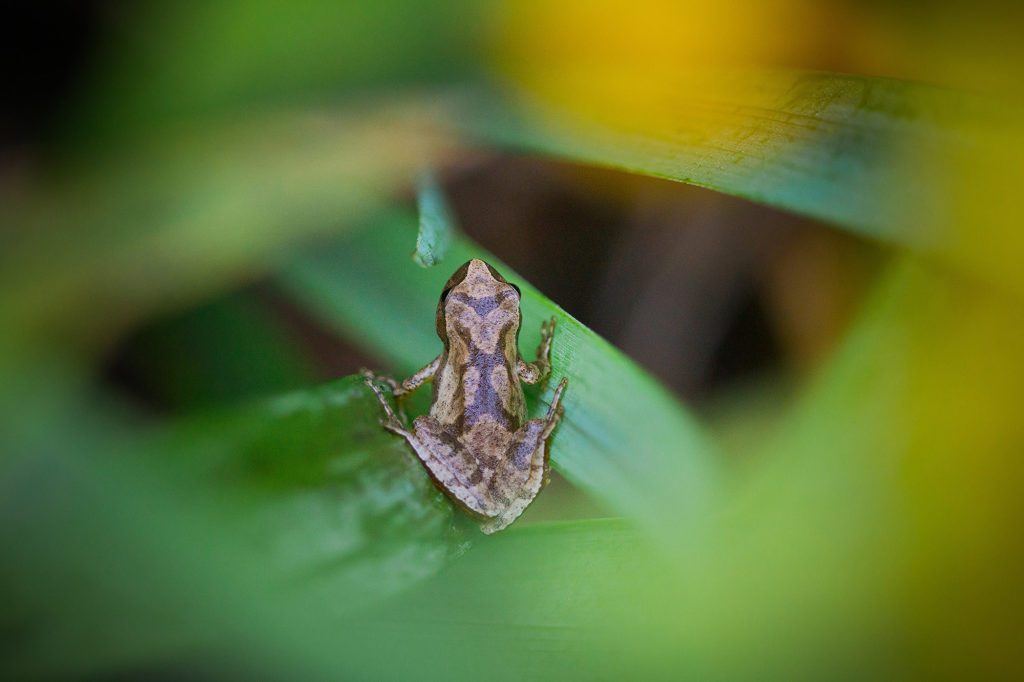
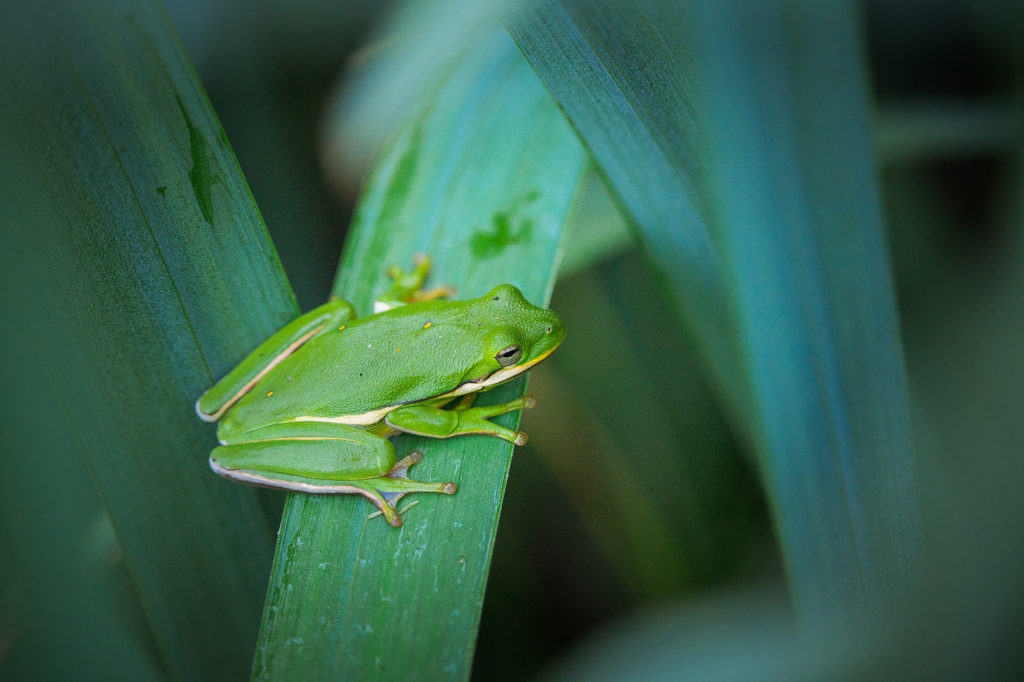
I repeated the same trick of putting my camera over my head to get carpenter bee butts in a rhododendron on the farm.
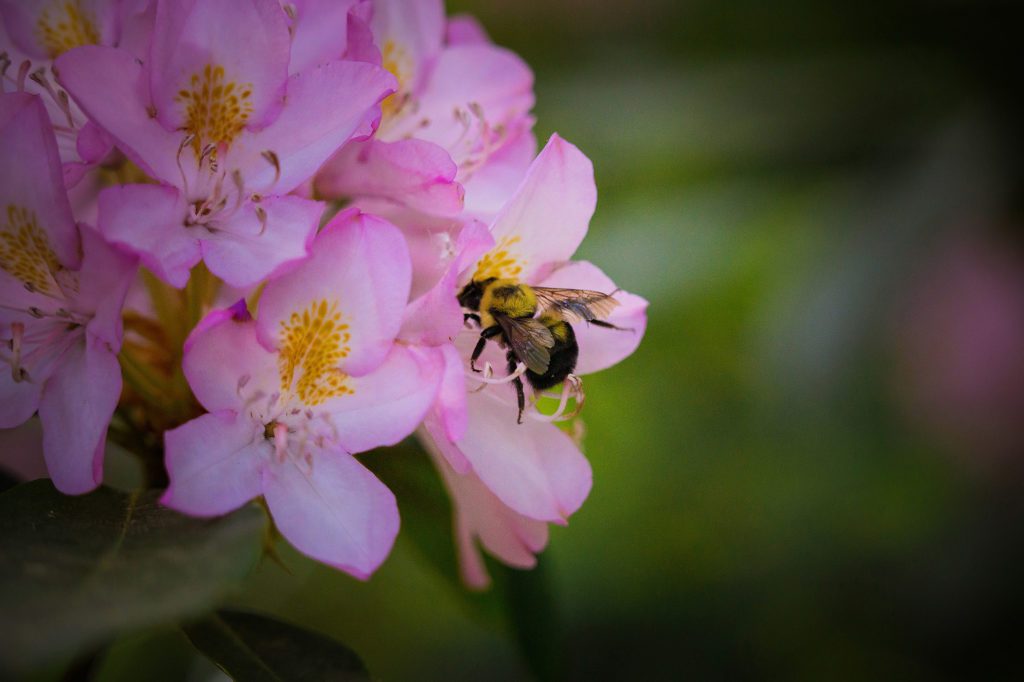
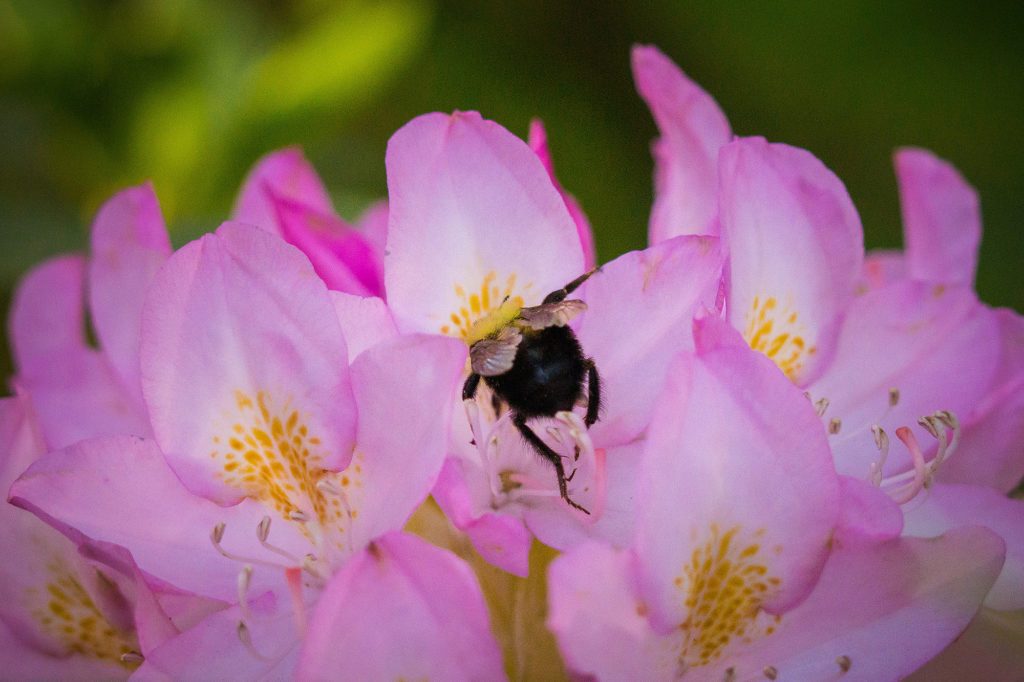
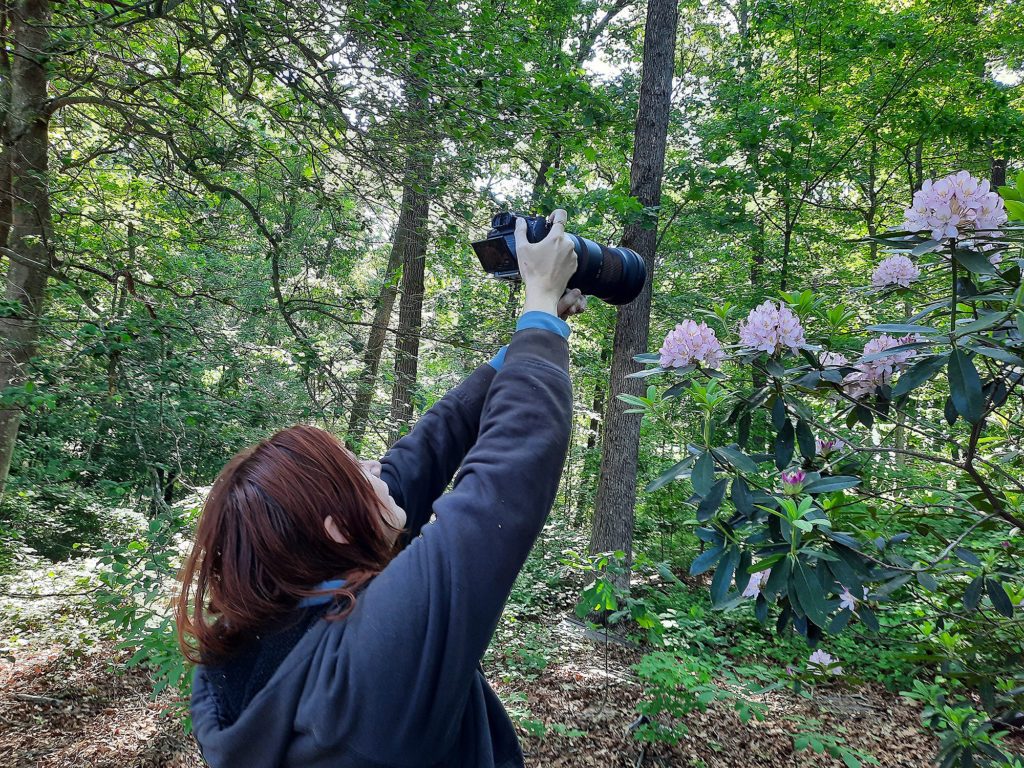
I was also able to easily focus on a pollen-covered spiderweb on a fence. The focus limiter switch helped again here, telling the lens to focus on only what was close. Despite its huge focal range, the lens had zero trouble getting that web in focus quickly and it didn’t have to hunt all over for it.
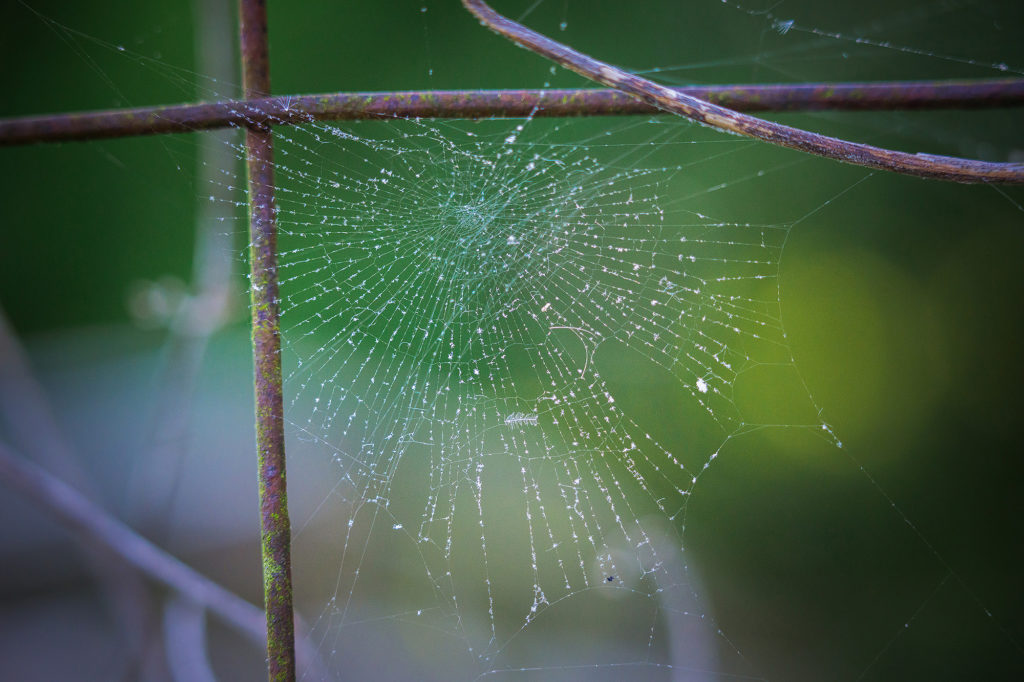
I also loved the results for the farm’s chicken-coop-eating rose bush (her name is Bertha). They’re soft on the back petals, but I was able to achieve greater depth of field with this lens, making the center of the flowers pop with crisp details.
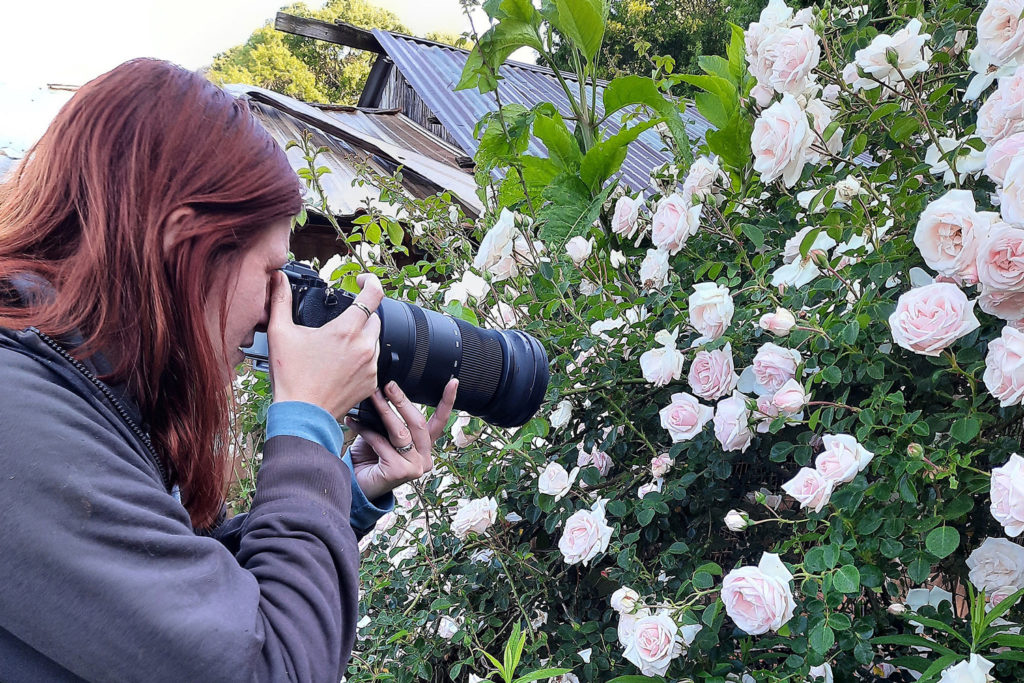
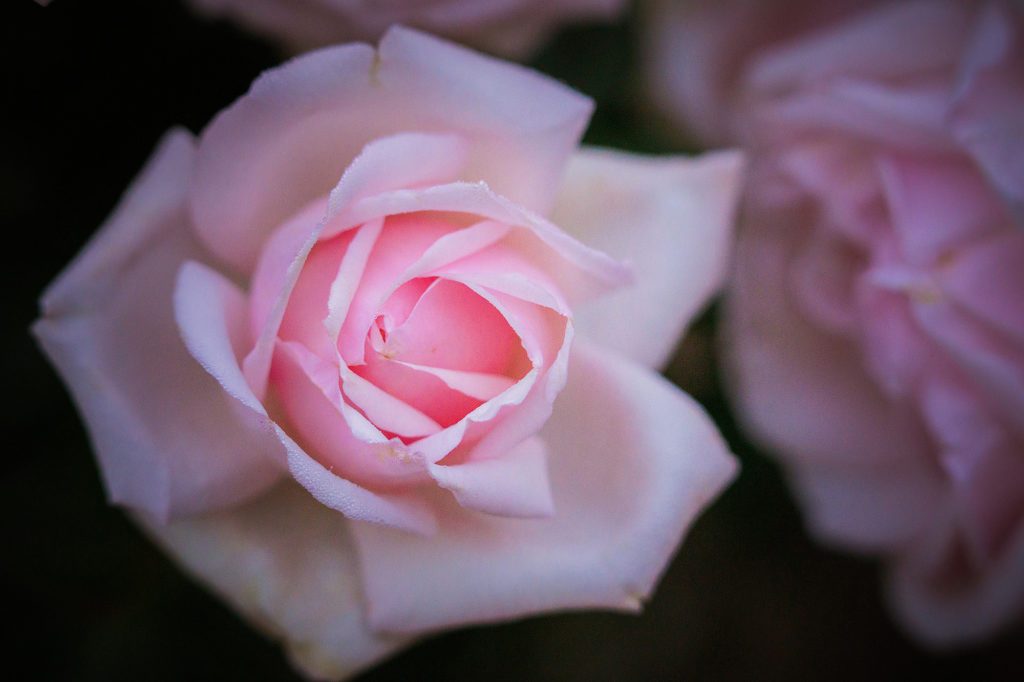
Will you shoot macro with this lens?
While the SIGMA 150-600mm F5-6.3 DG DN OS | Sports isn’t a true macro lens, it can certainly be used as one! Not only does it get amazing close-up photos, but it’s ability to zoom out and get flower portraits makes this a hardworking multi-job lens. It’s quick and sharp and not as heavy as I expected. It was easy for a seldom-zoom girl like me to use, and I love the images I was able to capture with this. Maybe you’re looking for a longer macro or perhaps you already own this lens for wildlife and didn’t know it could go close too!
